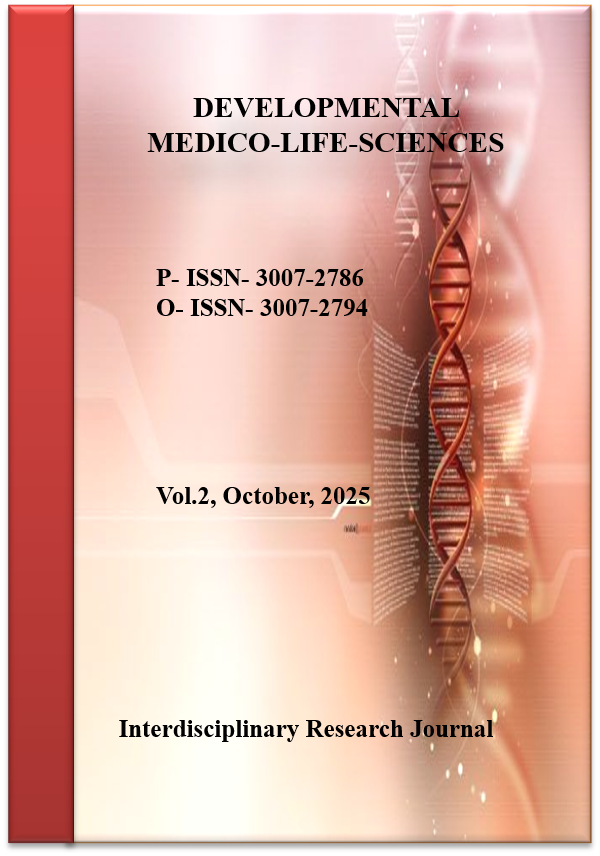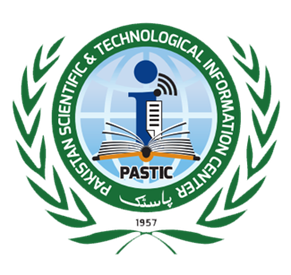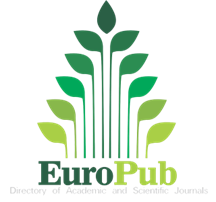Harnessing CRISPR Technology for Next-Generation Therapeutics in Genetic Disorders
CRISPR Therapeutics for Genetic Disease
DOI:
https://doi.org/10.69750/dmls.02.010.0160Keywords:
CRISPR-Cas9, Genome Editing, Genetic Disorders, Precision Medicine, Base Editing, Prime Editing, Bioethics, Translational TherapeuticsAbstract
INTRODUCTION
Medical science has been through numerous revolutions, including the discovery of the DNA structure, the introduction of recombinant technology, etc., but none of them has been as disruptive and democratizing as CRISPR (Clustered Regularly Interspaced Short Palindromic Repeats). What started as an adaptive technique of bacteria immunology has since become the foundation of specific genome engineering [1]. This system along with its effector proteins like Cas9, Cas12 and Cas13 enables targeted, programmable and low cost editing of genes with unmatched ease. In the current world, CRISPR technology is no longer a secret of the laboratory of basic science, it has become the greatest weapon in the therapeutic arsenal of genetic disorders, malignancies, and metabolic syndromes. The fact that it is translated to clinical applications is the start of a new era in molecular medicine where instead of treating diseases at the symptoms level, they are treated at their primary genetic source [2].
The Discovery to Clinical Translation:
CRISPR is one of the most motivating scientific stories of our age, which started its path in bacterial biology and ended up in clinical biotechnology. Subsequently, the breakthrough of CRISPR-Cas9, the 1992 publication by Jennifer Doudna and Emmanuelle Charpentier, has made CRISPR-Cas9 a powerful platform of genome-editing, which, however, can be reconfigured with synthetic guide RNA sequences to target virtually any genomic site. In a bit less than a decade this tool has transferred to phase-I and II clinical trials in inherited hematologic diseases, both sickle cell disease and 2-thalassemia, where the autologous hematopoietic stem cells are edited in the laboratory, then exposed in-vitro prior to transplantation into patients to revert them to fetal hemoglobin production. Clinical results have been positive with both curing of the defective gene as well as a lasting remission of the disease symptoms [3,4].
This success in translation has prompted swift development of other diseases like Leber congenital amaurosis, Duchenne muscular dystrophy and transthyretin amyloidosis, among others. Besides, the modular nature of CRISPR enables it to be incorporated into non-viral and viral delivery vectors, such as lipid nanoparticles (LNPs) and adeno-associated viruses (AAVs), extending its therapeutic utility into formerly inaccessible tissues. All these developments confirm that it is no longer a far-off fantasy that the correction of genes at the molecular level may become a clinical reality, but a clinical reality [5].
Expanding Modalities and Mechanistic Precision:
The extraordinary versatility of CRISPR systems has led to second-generation editing modalities, all of which deal with certain shortcomings of the initial Cas9 system. Base editing, independently invented by David Liu and others, allows the direct conversion of single nucleotides with no dependence on the formation of double-strand breaks, eliminating the chance of off-target insertion or deletion. Prime editing takes an additional step and uses reverse transcriptase activity plus CRISPR guidance which enables highly specific sequence replacements or insertions. The CRISPR interference (CRISPRi) and CRISPR activation (CRISPRa) currently enable the control of gene expression without changing DNA sequences, creating a novel activity in the field of epigenetic therapeutics [6,7].
Along with DNA editing, RNA-targeting CRISPR systems, including Cas13 are under investigation to provide transient and reversible gene expression editing, as is an appealing property in diseases where long-term and irreversible genomic changes have ethical or safety implications. These broad applications highlight the fact that CRISPR is increasingly becoming more and more a platform of molecular tools that can be used to tackle complex genetic environments in a variety of organ systems [8].
Rare Disorders to Complex Disease Therapeutic Horizons:
CRISPR was originally designed to work in monogenic diseases; however, it is now expanding to polygenic and multifactorial diseases. Oncology is one area where CRISPR has shown great potential, with CRISPR-engineered immune cells, including CAR-T cells, being engineered to improve tumor detection and withstand exhaustion. Long-term LDL cholesterol reductions in animal models and early human trials have established the in vivo efficacy of gene editing the PCSK9 gene in metabolic disorders such as hypercholesterolemia. CRISPR-based approaches to silence toxic gain-of-function mutations are also in development to study neurodegenerative diseases, such as Huntington disease and amyotrophic lateral sclerosis (ALS) [9].
Moreover, the combination of CRISPR with synthetic biology, nanomedicine, and stem-cell products promises a future where precision editing could be used alongside cell-based regeneration to open curative pathways to diseases previously seen as irreversible. With the collision of CRISPR and artificial intelligence and multi-omics profiling, specific mapping of pathogenic variants, patient stratification as well as personalized therapy design is now possible a characteristic of the new paradigm of personalized genomic medicine [10].
Ethical, Regulatory and Societal Aspects:
Although the potential of CRISPR in therapy is undeniably great, the emergence of this technology is accompanied by complicated ethical and legal issues. The human embryo germline genome editing scandal in 2018 was a wake-up call to the world that it can be abused and that international regulation needs to be established. The ability to alter genetic traits confronts the scientific fraternity to seek solutions to some of the most vexing ethical questions: What can we do to establish the limit between therapy and enhancement? Who determines the acceptability of the genome? Just as worrying are inequality in access all over the world. CRISPR-based treatments are costly, technologically intensive, and frequently limited to the high-income context. Otherwise, it may serve to intensify the healthcare disparities that already exist and draw a line between people that can afford the genomic cures and those ones that cannot. Regulatory bodies like the United States FDA, the European and World Health Organizations are thus in the process of developing guidelines that are safe, transparent, and fairly distributed. The future success of CRISPR will not only be determined by its scientific soundness, but also by the wisdom and inclusivity of its application, which will be ethical [11,12].
Challenges Ahead:
As the field progresses at a fast rate, there are a number of technical obstacles that still exist. Although minimally, with better guide design algorithms, and high-fidelity variants of Cas, off-target editing has been significantly decreased, it is a non-trivial risk. The problem with efficient and tissue-specific delivery systems has not yet attained universal reliability particularly when using them in vivo and when the targets are the central nervous system or myocardium. It is also possible that the immune reaction to Cas proteins, which have bacterial origins, could prevent their persistence when used therapeutically. In addition, mass production, testing, and the follow-up results at a long-term basis are critical before these interventions are integrated into the mainstream clinical therapy [13].
These issues can be addressed by cross-disciplinary teamwork. Partnerships between molecular biologists, bioengineers, clinicians, ethicists, and data scientists will be crucial in innovation, and it will help to sustain the trust of the people. At the same time, it is expected that the translation process should be founded on open communication with patients and policymakers because the interest of technological possibilities does not override the vision of patient safety [14,15].
CONCLUSION
CRISPR technology is not a small step to gene therapy but an overhaul of what medicine is all about. It reflects the change of the condition of reaction and correction, between control of the symptoms and recovery of the molecules. But today, when we are at this border, we must go forward with the modesty of the experience of the past biomedical revolutions. The scientific community has a collective duty to ensure that the right to craft the blueprint of life is employed uprightly, inclusively and prospectively. The world where getting the disorders is expected to be totally cured is the dream that is no longer the dream, but it is the reality that is being fulfilled. The next decade will determine whether this technology will realise its potential and eradicate genetic misery or not due to ethical and societal disintegrations. Properly applied, CRISPR will not only change the character of medicine but even the ethics of science, in general, to cure the human illness and improve the quality of life of all people.
Downloads
References
Song S, Kang HW, Kang M, Chung S, Choi N, Kim HN, et al. Harnessing CRISPR technology for next-generation microphysiological systems. TrAC Trends Anal Chem. 2025;185:118164. doi:10.1016/j.trac.2025.118164.
Far BF, Akbari M, Habibi MA, Katavand M, Nasseri S. CRISPR technology in disease management: An updated review of clinical translation and therapeutic potential. Cell Prolif. 2025;58(11):e70099. doi:10.1111/cpr.70099.
Shahid A, Zahra A, Aslam S, et al. Appraisal of CRISPR technology as an innovative screening to therapeutic toolkit for genetic disorders. Mol Biotechnol. 2025. doi:10.1007/s12033-025-01374-z.
Li T, Yang Y, Qi H, et al. CRISPR/Cas9 therapeutics: progress and prospects. Signal Transduct Target Ther. 2023;8:36. doi:10.1038/s41392-023-01309-7.
Iyer KA, Tenchov R, Lotti Diaz LM, Jain P, Thite T, Deng Y, et al. CRISPR technology: Transforming the future of medicine and diagnostics. Biochemistry. 2025. doi:10.1021/acs.biochem.5c00480.
Zeballos CMA, Gaj T. Next-generation CRISPR technologies and their applications in gene and cell therapy. Trends Biotechnol. 2021;39(7):692–705. doi:10.1016/j.tibtech.2020.10.010.
Kim MG, Go MJ, Kang SH, et al. Revolutionizing CRISPR technology with artificial intelligence. Exp Mol Med. 2025;57:1419–1431. doi:10.1038/s12276-025-01462-9.
Wang T, Wang Z, Bai L, Zhang X, Feng J, Qian C, et al. Next-generation CRISPR-based diagnostic tools for human diseases. TrAC Trends Anal Chem. 2023;168:117328. doi:10.1016/j.trac.2023.117328.
Zahedipour F, Zahedipour F, Zamani P, Jaafari MR, Sahebkar A. Harnessing CRISPR technology for viral therapeutics and vaccines: from preclinical studies to clinical applications. Virus Res. 2024;341:199314. doi:10.1016/j.virusres.2024.199314.
Aljabali AAA, El-Tanani M, Tambuwala MM. Principles of CRISPR-Cas9 technology: Advancements in genome editing and emerging trends in drug delivery. J Drug Deliv Sci Technol. 2024;92:105338. doi:10.1016/j.jddst.2024.105338.
Amen RA, Hassan YM, Essmat RA, Ahmed RH, Azab MM, Shehata NR, et al. Harnessing the microbiome: CRISPR-based gene editing and antimicrobial peptides in combating antibiotic resistance and cancer. Probiotics Antimicrob Proteins. 2025;17(4):1938–1968. doi:10.1007/s12602-025-10573-8.
Li T, Li S, Kang Y, et al. Harnessing the evolving CRISPR/Cas9 for precision oncology. J Transl Med. 2024;22:749. doi:10.1186/s12967-024-05570-4.
Wu SS, Li QC, Yin CQ, Xue W, Song CQ. Advances in CRISPR/Cas-based gene therapy in human genetic diseases. Theranostics. 2020;10(10):4374–4382. doi:10.7150/thno.43360.
Hendel A, Bak RO. Editorial: CRISPR and beyond—cutting-edge technologies for gene correction in therapeutic applications. Front Genome Ed. 2023;5:1203864. doi:10.3389/fgeed.2023.1203864.
Liu D, Cao D, Han R. Recent advances in therapeutic gene-editing technologies. Mol Ther. 2025;33(6):2619–2644. doi:10.1016/j.ymthe.2025.03.026.






















